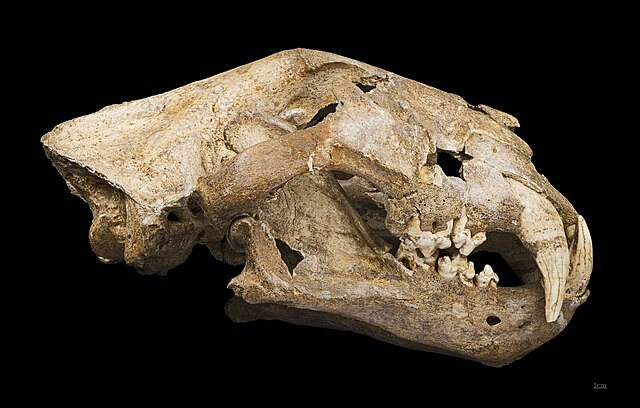History of lions in Europe
The history of lions in Europe is based on fossils of Pleistocene and Holocene lions excavated in Europe since the early 19th century.
The first lion fossil was excavated in southern Germany, and described by Georg August Goldfuss using the scientific name Felis spelaea. It probably dates to the Würm glaciation, and is 191,000 to 57,000 years old.
Older lion skull fragments were excavated in Germany and described by Wilhelm von Reichenau under Felis fossilis in 1906. These are estimated at between 621,000 and 533,000 years old.
The modern lion inhabited parts of Southern Europe since the early Holocene.
A Panthera spelaea skull excavated near Montmaurin, Haute-Garonne, France, in the Muséum de Toulouse
Skeleton of P. spelaea in the Natural History Museum, Vienna
Karanovo, Nova Zagora Municipality in Bulgaria, where the fragments of a lion's tooth about 6,000 years old were found
The Löwenmensch figurine found in Germany has been dated to the Upper Paleolithic during the Pleistocene, about 35,000 to 40,000 years ago
Panthera fossilis, is an extinct species of cat belonging to the genus Panthera, known from remains found in Eurasia spanning the Middle Pleistocene and possibly into the Early Pleistocene. P. fossilis has sometimes been referred to by the common names steppe lion or cave lion, though these names are conventionally restricted to the later related species P. spelaea, to which P. fossilis is probably ancestral.
Panthera fossilis





